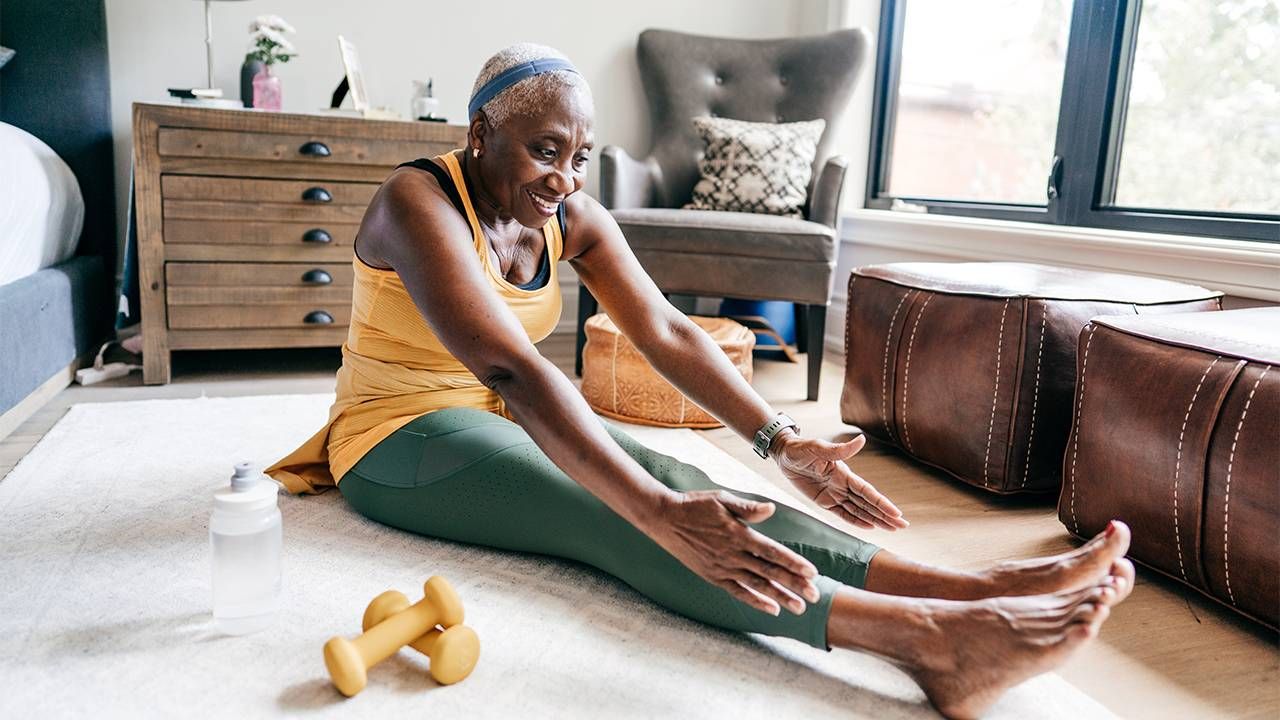Posture Tips to Help You Feel Younger
Pay attention to your body's alignment to avoid serious health problems
(This article previously appeared on Grandparents.com.)
"Stand up straight! Stop slouching!" Your parents admonished you, you admonished your children and they are probably saying the same things to your grandchildren. As it turns out, we are all on the right track: Good posture is critical for good health.
The Perils of Bad Posture
According to Mary Ann Wilmarth, a physical therapist and spokesperson for the American Physical Therapy Association (APTA), poor posture can exacerbate:

- Osteoarthritis or compression issues, putting you at increased risk of fracture
- Headaches
- Diminished breathing ability
- Back and neck pain
- Fatigue
- Heightened risk of athletic injury
(MORE: Stop Slouching: Poor Posture Leads to Poor Health)
"Stand Up Straight," Defined
In order to correct your posture, however, you have to know what good posture looks like. It is not shoulders and head flung back. You should have three main curves: The cervical/neck, thoracic/ribs, and lumbar/low back/sacrum into the coccyx. You want to be balanced front to back and side to side.
"If you look from the side, if your ear, shoulder, hip, knee and ankle are in a pretty straight line, give or take, then your curves are most likely in the right positions," said Wilmarth, who is also Chief of Physical Therapy, Harvard University Health Services.
The Correct Way to Sit
Don't forget seated posture. It is just as important, since so many of us these days spend hours shlumped over a computer. When sitting at your desk, Wilmarth recommends:
- Your ear, shoulder and hip should be in a straight line; your elbow, hips and knees should be at 90 degrees.
- You should have good lumbar support.
- Sit as close to the desk as you can.
- Your computer should be 24 inches ahead of you so you don’t put your head too far forward.
- Looking straight across, your vision should focus almost to the top of the computer screen.
- Take stretching breaks every half hour.
"The body craves movement to keep the joints mobile and the muscles loose," says Wilmarth. Check APTA's Moveforwardpt.com for pictures of ideal set ups for ergonomics.
(MORE: The Health Hazards of Sitting Too Much)
Why We Slouch
Postural problems that aren't structural in nature (such as scoliosis) can come over time from habits of sitting and standing.
"This causes weakness in the muscles that support the spine. Then you'll tend to favor it, shifting and slouching, accommodating muscles that become weaker and weaker because you are not using them," explains Wilmarth.
Exercises can definitely help. The sooner that you are proactive about it, the better the result. "If there are things that are more structural, exercises won't change that, but they can help prevent dysfunction from occurring or from occurring at a faster rate," adds Wilmarth.
Exercises That Improve Posture
"Doing exercises daily, just a few minutes at time, is all it takes to have an effect," says Dr. Melanie Kinchen, a spokesperson for the American Academy of Orthopaedic Surgeons. For example:
- Throughout the day, do backwards shoulder circles and shoulder blade squeezes for a few minutes at a time.
- Try rowing exercises with elastic tubing or weights.
- Do alphabet exercises with your stomach on an exercise ball: Letter I: Bring your arms to the ceiling, squeeze shoulder blades. Letter M: Bring your arms in rowing position, elbows up to the ceiling. Letter T: Arms out to the side, bring up to the ceiling. Letter Y: Arms up by your ears, thumbs up, lift up. “If you don’t have a ball, do it over the corner of the bed. Gradually add in arm weights,” says Wilmarth.
- Work the abdominals to improve core strength — planks, sit ups, back stretches. “The stronger your core is, the better your spine can support you. Your back muscles help that tower stay in place, putting less strain on the discs and joints that are starting to wear out,” says Kinchen, who is also an orthopedic surgeon with specialty training in spine surgery from Grapevine, Texas.
(MORE: Best Ways to Improve 5 Favorite Workouts)
What about postual braces, shirts, and — for women — bras? If you don't have actual structural problems, they don't work, says Kinchen.
"Braces will actually make muscles weaker because you aren't using your them. Bras and shirts may make you look better temporarily, but they don't help in the long run. There are no quick fixes," she notes. One caveat: If you are large-breasted woman, it is critical to get a good support bra with large, padded straps so your breasts don't pull you forward and cause back pain.
It Takes Time to Adjust
If you are not used to being in a more neutral position, it may feel strange at first. That's OK, you are trying to change it. Let your body adjust. It took a long time to get to where you are, so it may take a while to change postural habits. But it's worth it. "You will feel less fatigued and more energized and much easier to function going forward. Paying attention to it in the short time will pay off with long-term benefits," says Wilmarth.
Grandparents.com is a lifestyle website, social media community & peer group that unites & connects America's 70 million Grandparents to the best information and premier products & services just for them. Our goal is to promote well-being and give timely information on what really matters to you, from health and money to family and relationships to travel and retirement.

